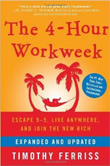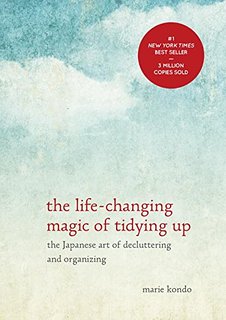Cultural Interaction Can Have Positive Impact
Brandon Sun, April 24, 2017 – David McConkey
Culture has become a hot topic in Canada. The Truth and Reconciliation Commission criticized the former Indian residential schools for “cultural genocide.” But as a remedy, the Commission calls for future school and other programs to be “culturally appropriate.” Meanwhile, in the Conservative leadership contest, there are proposals to screen immigrants for “Canadian values.” (Another current complaint is about “culturally appropriation.”) I find all these approaches to be narrow-minded. They also lack an appreciation of cultural exchange, enrichment and evolution.Cultural influences go in more than one direction. Indigenous peoples were affected by – but also helped shape – the larger Canadian culture. As well, we all are influenced by cultures from around the world.
Contemporary Canadian culture, public intellectual John Ralston Saul points out, has “Métis” roots: being a blend of indigenous and European traditions. Saul identifies important elements of Canadian culture – like complexity, inclusion and diversity – as being indigenous in origin. These traits, Saul says, are “the product of the long relationship with indigenous peoples, their approaches and philosophies.”
As a result of indigenous influences, today Canada is better than the U.S. or European counties at welcoming and integrating newcomers.
And speaking of newcomers, let’s note that we make clear to them that Canadian culture is based on respect and human rights. Look at our study guide for new immigrants: Discover Canada: The Rights and Responsibilities of Citizenship.”
“In Canada, men and women are equal under the law,” the document states. “Canada’s openness and generosity do not extend to barbaric cultural practices that tolerate spousal abuse, ‘honour killings,’ female genital mutilation, forced marriage or other gender-based violence.”
Canada is welcoming, but we Canadians do not tolerate intolerance!
But let’s emphasize the positive aspects of cultural interaction. An example of our culture being enhanced from elsewhere is yoga. The history of yoga and how it migrated from India to this continent is a fascinating one. One of the key people in this cross-cultural dynamic was Indra Devi, who lived from 1899 to 2002.
 Anyone
who enjoys yoga today should be grateful to Devi and her efforts to
transmit this practice from India to the wider world. (And anyone who
enjoys a great story will be grateful for a new biography about Devi by
American writer Michelle Goldberg. It is “The Goddess Pose: The Audacious Life of Indra Devi, The Woman Who Helped Bring Yoga to the West.”)
Anyone
who enjoys yoga today should be grateful to Devi and her efforts to
transmit this practice from India to the wider world. (And anyone who
enjoys a great story will be grateful for a new biography about Devi by
American writer Michelle Goldberg. It is “The Goddess Pose: The Audacious Life of Indra Devi, The Woman Who Helped Bring Yoga to the West.”) Although ancient in origin, yoga had fallen into neglect in India by the early 1900s. But some Indians wanted to revive the practice for the modern age. This yoga renaissance was part of a more general rediscovery of Indian heritage and the fight for Indian independence from Britain. (British rulers had looked down on native Indians and their culture.)
Devi had participated in this movement in India before emigrating to the U.S. in the middle of the last century. She had studied under leading yoga practitioners. She knew Mahatma Gandhi. She was good friends with Jawaharlal Nehru, who became the first prime minster of India.
There was an interesting Nehru yoga connection. During the struggle for independence, Nehru had been frequently jailed by the British. During his times in prison, he kept his mind and body sharp by doing yoga.
After Devi moved to the U.S., she popularized yoga by making public appearances, befriending celebrities, and writing bestselling books. Her first book, in 1953, was Forever Young, Forever Healthy. Another was Yoga for Americans.
Yet the Devi yoga story – like much modern cultural diffusion – is even deeper and richer than it first appears. To start with, Devi was not originally from India. She was born Eugenia Peterson in what is now Latvia; her parents were Russian and Swedish. One of the things she did after moving to India was to work as an actress in Indian films. She took as her stage name “Indra Devi.”
And there’s more. When yoga enthusiasts in India were revitalizing yoga in the early 1900s, they drew on more than the traditions of Indian yoga. They also adapted ideas from other sources, including Indian wresting, YMCA physical education, American bodybuilding, and Danish gymnastics. (And yoga in North America has evolved since the 1950s.)
Cultures continually change. And that’s a good thing! So, politically motivated demands for “Canadian values” or for programs that are “culturally appropriate” are often shortsighted and misguided.
With culture, why not always look on the bright side? Let’s be grateful for the global cornucopia around us!
* * *
See also:
The Goddess Pose on Amazon.com (on
Amazon.ca
)
Deepening Our Thinking in the Internet Age: Ten Tips
One Last Look at a Wild and Wacky Year for Words
Exploring What's Lost in a Connected World
Changing the Calendar, Changing the Culture
Popular Right Now:
- 15 Tips for Healthy Eating
- Quality of Life, Well-Being Research Something We Can Feel Good About
- Diets Don't Work, So What Does?
- Political Contributions: Top Ten Canadian Tax Tips
- Nestle Fitness 14 Day Weight Loss Program; What is Wrong Here?
- Charitable Donations: Top Ten Canadian Tax Tips
Must Read Books:
The 4-Hour Workweek:
Escape 9-5, Live Anywhere, and Join the New Rich

What You Don't Know About Religion (But Should)

In Defense of Food:
An Eater's Manifesto

The Life-Changing Magic of Tidying Up:
The Japanese Art of Decluttering and Organizing

Don't
Even Think About It:
Why Our Brains are Wired to Ignore Climate Change

Like This? Share It!
Press Ctrl + D to Bookmark!
